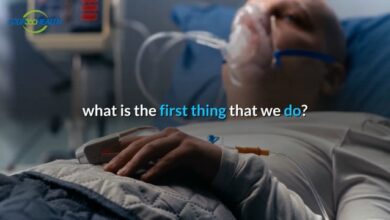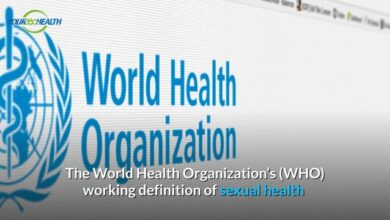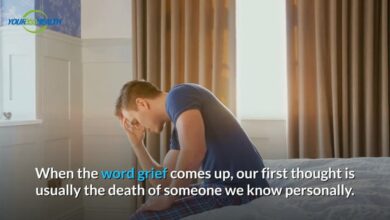By Syndi Victor
Children, many thousands of children in fact, struggle with arthritis. Contrary to popular opinion, arthritis is not confined to older people. Arthritis is the #1 cause of disability in the U.S. And did you know, that the total medical costs and earnings losses due to arthritis was estimated to be $303.5 billion in 2013; nearly 1% of the gross domestic product that year. However, arthritis occurs in childhood too and July is Juvenile Arthritis Awareness Month.
Many people including organisations such as the Arthritis Foundation are dedicated to making everyone aware that children are also at the painful end of this condition. Juvenile arthritis is a disease in which there is inflammation (swelling) of the synovium in children aged 16 or younger. The synovium is the tissue that lines the inside of joints. Juvenile arthritis is an autoimmune disease. That means the immune system, which normally protects the body from foreign substances, turns inward and attacks the body itself. The disease is also idiopathic which means that no exact cause is known. Researchers believe juvenile arthritis may be related to genetics, certain infections, and environmental triggers.
There are five types of juvenile arthritis: systemic arthritis, also called Still’s disease, can affect the entire body or involve many systems of the body. Systemic juvenile arthritis usually causes high fever and a rash. The rash is usually on the trunk, arms, and legs. Systemic juvenile arthritis can also affect internal organs, such as the heart, liver, spleen, and lymph nodes, but usually not the eyes. Oligoarthritis, also called pauciarticular juvenile rheumatoid arthritis, affects fewer than five joints in the first six months that the child has the disease. The joints most commonly affected are the knee, ankle, and wrist. This type of arthritis is more common in girls than in boys, and many children will outgrow this disease by the time they become adults. Which is a great relief. Polyarthritis, also called polyarticular juvenile idiopathic arthritis, involves five or more joints in the first six months of the disease — often the same joints on each side of the body. This type of arthritis can affect the joints in the jaw and neck, as well as those in the hands and feet. Then there is Psoriatic arthritis. This type of arthritis affects children who have both arthritis and the skin disorder psoriasis. A child may suffer with the arthritis years before developing the second part of the disease. Enthesitis-related arthritis is a type of arthritis that often afflicts the spine, hips, eyes, and entheses (the places where tendons attach to bones). This type of arthritis occurs mainly in boys older than 8 years of age.
Children with juvenile arthritis may not have any symptoms at all. Equally true, as we have just outlined symptoms will vary depending on the type of arthritis. The following list is not an exhaustive one but will provide a starting point for parents who are concerned about their children
- Joint stiffness, especially in the morning
- Pain, swelling, and tenderness in the joints
- Limping (In younger children, it may appear that the child is not able to perform motor skills he or she recently learned.)
- Persistent fever
- Rash
- Weight loss
- Fatigue
- Irritability
- Eye redness or eye pain
- Blurred vision
Diagnosing any type of Juvenile Arthritis can be challenging and confusing as some symptoms can be associated with and are indicative of the possibility of other diseases. There is no actual test for juvenile arthritis. The diagnosis is made by a process of elimination in which the physician systematically works to exclude other conditions that share similar symptoms. Some of these conditions are bone disorders or breaks, fibromyalgia, infection, Lyme disease, lupus, or even cancer. The investigating doctor is likely to begin by taking a complete medical history and performing a complete medical exam. Additional testing is useful in determining the type of arthritis.
There is no cure for Juvenile Rheumatoid Arthritis but with prompt diagnosis and early aggressive treatment, remission is possible. The goal of treatment is to relieve inflammation, control pain and improve quality of life for the child. The treatment plan may include medication, exercise, eye care, dental care and proper nutrition. In relatively rare cases, surgery may be necessary at later stages to help with pain or joint function.
There have been many scientific developments in the study and treatment of Juvenile Arthritis. For a child diagnosed with Juvenile Arthritis today, the prognosis is better than at any time in history. Yukiko Kimura, MD, chief of pediatric rheumatology at Joseph M. Sanzari Children’s Hospital, Hackensack University Medical Center, in New Jersey says, “The advent of new drugs in recent years and years of experience with the older ones make it possible for the vast majority of children to live healthy, active lives, and in most cases avoid the joint damage that was common a generation ago.” Still there is still so much that can be done.
The month of July is dedicated to raising awareness and the #StrongerThanJA Campaign wants to get the message out that over 300,000 children in the U.S. alone are dealing with arthritis everyday. Sarah B, 24, shared her struggle with Juvenile Arthritis with the Arthritis Foundation saying “I was diagnosed with Juvenile Arthritis when I was 18 months old. I was the ideal patient for years, very easy to care for. That was until 5 years ago when I was training for my first half marathon. I completely withered away my cartilage in my ankle and now I constantly limp and lost alot of motion in my ankle. People ask if it is painful and the truth is that yes it is but also I have a high pain tolerance because I’ve learned to live with the pain. Children who live with arthritis are some of the strongest. Every day that we get up and go is a feat, a success.”
Since Juvenile Arthritis has affected the lives of so many young people, the Arthritis Foundation based in Atlanta,has created Camp AcheAway in partnership with Camp Twin Lakes, which has family, resident, and teen camps. At Camp AcheAway, young people can swim, dance, play sports, and truly enjoy themselves despite their disability. Many people with JRA have learned to not let the diagnosis consume their lives. They are determined to remain active and help others by sharing their stories. The important thing to remember if you or a loved one is faced with this disability is that any movement is better than no movement. And there is no shame in knowing your limitations.
*You can help by sharing your story, reading other stories, or making a donation.
ARTHRITIS FOUNDATION NATIONAL OFFICE
1355 Peachtree St NE, 6th Floor, Atlanta, GA 30309 | 404.872.7100
2019 JA Camp Acheaway, June 2-8 ages 6-17, Camp AcheAway Family Camp September 27-29, Camp Will-A-Way, Winder, GA
May 4, 2019 Walk to Cure Arthritis
October 19 2019 Crystal Ball
December 14 2019 Jingle Bell Run




